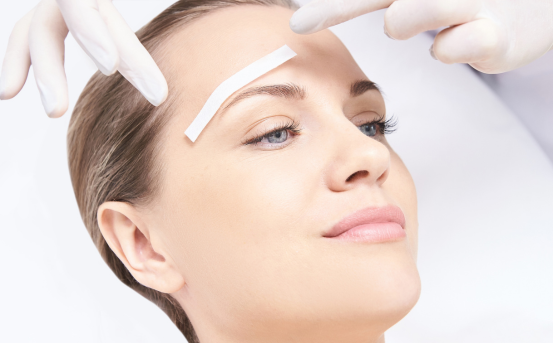Introduction
Cosmetic eye surgery, also known as oculoplastic surgery or blepharoplasty, focuses on improving the appearance of the eyes and the surrounding areas of the face. The eyes are one of the most expressive and visible features of the human face. They convey emotion, reflect age, and often shape how people perceive you. Over time, the area around the eyes is prone to visible signs of aging like wrinkles, puffiness, sagging skin, and under-eye bags. Cosmetic eye surgery aims to reverse or reduce these changes to create a more youthful, rested, and symmetrical appearance.
There is a wide range of procedures under the umbrella of cosmetic eye surgery, each designed to address a particular concern. These surgeries may involve removing excess skin, redistributing or removing fat, tightening muscles, or reshaping eyelid structures. Some patients may pursue cosmetic surgery for purely aesthetic purposes, while others do it to address functional problems such as impaired vision caused by drooping eyelids.
Advancements in technology and surgical techniques have made these procedures safer, more effective, and less invasive. Here are the major types of cosmetic eye surgery that patients often consider when looking to enhance the appearance of their eyes.
Types of Cosmetic Eye Surgery
- Upper Eyelid Surgery :- Upper eyelid surgery is one of the most common cosmetic eye procedures, primarily performed to remove excess skin, fat, or muscle that creates a droopy or saggy look. With age, the skin above the eyes can stretch and lose its firmness, making the eyes appear hooded, tired, or smaller. In some cases, the drooping may be severe enough to impair vision. The goal of upper eyelid surgery is to restore a natural crease and a more open-eyed appearance, improving both aesthetics and vision if needed. The surgeon makes a small incision in the natural eyelid fold, carefully removing or repositioning the tissue for a more defined look. Results are generally long-lasting and can take years off a person’s facial appearance.
- Lower Eyelid Surgery :- Lower eyelid surgery focuses on reducing puffiness, under-eye bags, and wrinkles beneath the eyes. Fat deposits tend to accumulate under the eyes over time, creating a bulging or tired look that doesn’t go away with rest. This surgery aims to smooth the contour between the lower eyelid and cheek, often by removing or repositioning the fat and tightening the skin. In some cases, laser resurfacing is also combined to improve skin texture. The procedure is typically performed through a small incision either inside the lower eyelid or just below the lash line. It is ideal for individuals with good skin elasticity who are primarily concerned with puffiness rather than loose skin. Lower eyelid surgery offers a refreshed and rejuvenated appearance, often making patients look significantly younger.
- Double Eyelid Surgery :- Double eyelid surgery, also known as Asian blepharoplasty, is especially popular in East Asian countries. The procedure creates a visible crease in the upper eyelid for individuals who are born without one. Some people seek this surgery for cultural or aesthetic reasons, desiring larger or more defined eyes. The technique involves creating a crease either by removing a small amount of skin and fat or by using sutures to form a natural fold. It requires precision and an understanding of individual anatomy to ensure symmetrical and natural-looking results. The surgery can make the eyes appear more open and expressive, often with minimal recovery time and long-lasting results.
- Eyelid Ptosis Correction :- Ptosis is a condition where the upper eyelid droops over the eye, sometimes to the point of partially or fully obstructing vision. Unlike cosmetic eyelid surgery that focuses mainly on skin and fat removal, ptosis correction targets the muscles responsible for lifting the eyelid. The surgeon either tightens or reattaches the levator muscle to elevate the eyelid to its proper position. While this is sometimes done for medical reasons, it also has a significant cosmetic benefit, as drooping eyelids can make the face appear uneven, older, or fatigued. Ptosis correction is a delicate procedure that requires a skilled oculoplastic surgeon for precise and symmetrical outcomes.
- Canthoplasty (Eyelid Reshaping Surgery) :- Canthoplasty is a reconstructive or cosmetic procedure that alters the shape and angle of the outer corner of the eye (lateral canthus). This surgery is often sought by people who wish to lift drooping outer eyelids or change the overall shape of the eye to appear more almond-like. It’s particularly useful for correcting sagging lower eyelids or rejuvenating the eye’s appearance after trauma or aging. Canthoplasty can be done alone or combined with other procedures like lower eyelid surgery to enhance results. It requires detailed anatomical knowledge to maintain proper eyelid function while achieving the desired aesthetic effect. The results can be transformative, giving a lifted, more defined look to the eye area.
- Brow Lift (Forehead Lift) :- Although technically not an eyelid surgery, a brow lift is often grouped under cosmetic eye procedures because of its profound impact on the eye region. Drooping brows can create a heavy or furrowed appearance, contributing to sagging upper eyelids. A brow lift raises the eyebrows to a more youthful position, smoothing out forehead wrinkles and opening up the eyes. There are various techniques to perform a brow lift, including endoscopic, temporal, and coronal methods. When combined with upper eyelid surgery, it can offer dramatic facial rejuvenation. A well-done brow lift gives the face a refreshed and alert expression without looking surprised or overdone.
- Eyelid Revision Surgery :- Not all cosmetic eye surgeries deliver perfect results the first time, and some patients may experience complications or unsatisfactory outcomes. Eyelid revision surgery is performed to correct or enhance the results of previous eyelid surgeries. Common reasons for revision include asymmetry, over-removal or under-removal of skin and fat, scarring, or functional issues like dry eyes or inability to close the eyelids properly. This type of surgery is typically more complex than the initial procedure, as it involves working with altered tissue and scar formation. A skilled and experienced oculoplastic surgeon is essential for a successful revision and to meet the patient’s aesthetic and functional expectations.
Conclusion
Cosmetic eye surgery includes a wide range of procedures tailored to the individual’s aesthetic desires and functional needs. From correcting droopy upper eyelids to refining the shape and contour of the eyes, these surgeries offer both physical transformation and emotional benefits. As the eye area is one of the first regions to show signs of aging, cosmetic enhancements can have a powerful rejuvenating effect on the entire face. Choosing the right type of surgery depends on various factors such as age, anatomy, goals, and medical history. Consulting a qualified oculoplastic or cosmetic surgeon is crucial in deciding the most appropriate approach. With the right expertise and careful planning, cosmetic eye surgery can yield natural, long-lasting, and satisfying results.























